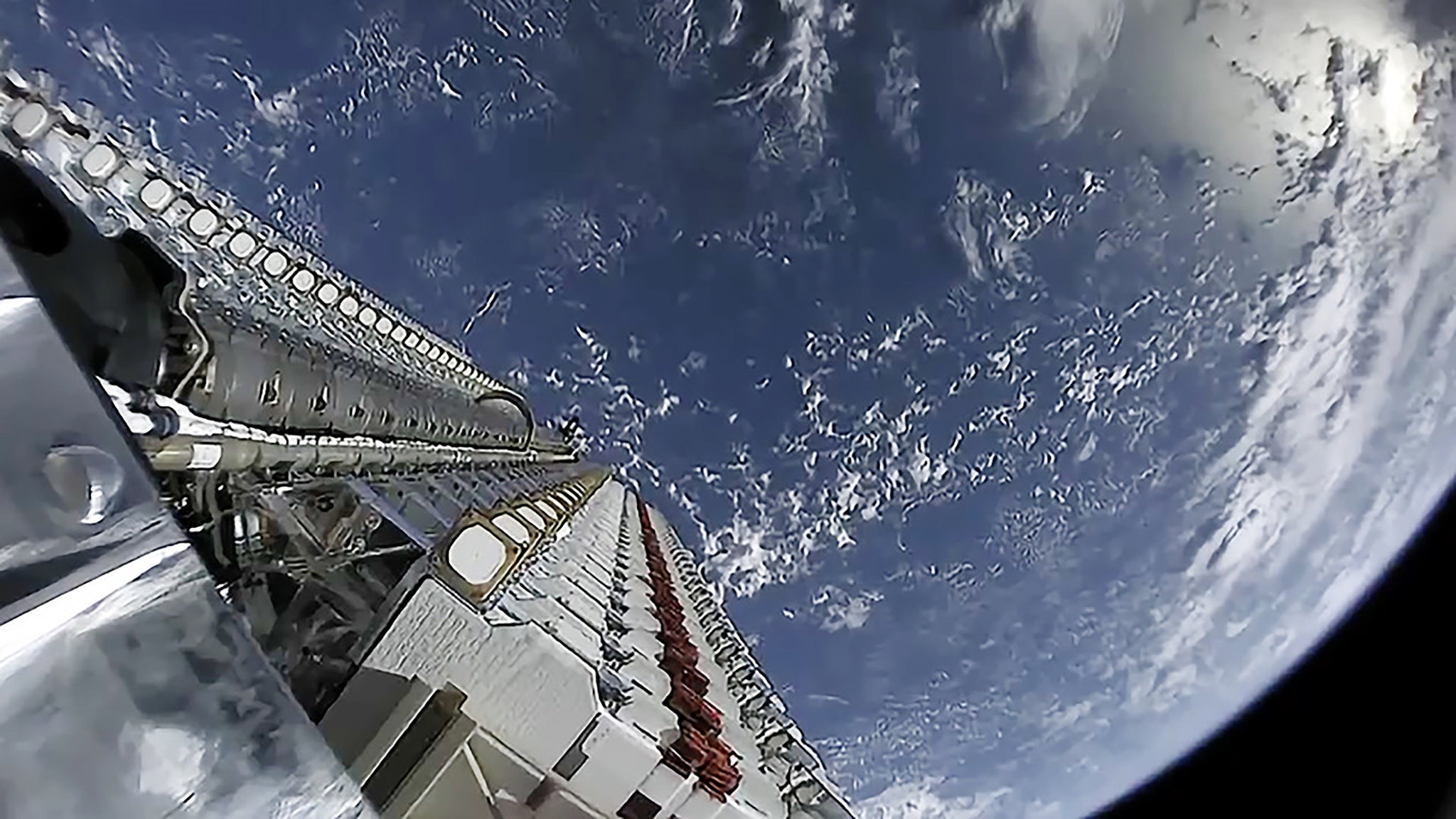
A few days ago, the company Ilona Mask SpaceX successfully launched the Falcon 9 with 60 Starlink satellites. They have already entered orbit, there are no problems with the operation of the devices. The satellites are fine, but astronomers fear that in the near future, astronomical observations using telescopes will be difficult to carry out due to the influence of communication systems in orbit .
The problem is that the satellites reflect sunlight and are very clearly visible from Earth. While there are several dozen, they do not interfere with astronomers. But SpaceX said that in the near future the number of devices will be increased by 30,000. And in this case, astronomers will have significant problems.
From the moment the first satellites enter orbit, astronomers have been trying to understand how significant the level of light pollution will be. Elon Musk and representatives of SpaceX have not yet commented on this issue.
In October, Musk announced that his company had requested permission from the US Federal Communications Commission to increase the number of satellites from 12,000 (permission has already been received here) to 42,000. Accordingly, the number of vehicles in Earth’s orbit will increase manyfold - 8 times the current number of all satellites that are in near-Earth outer space .
James Loanthal, an astronomer at Smith College, said that when he first saw a string of new Starlink satellites entering Earth’s orbit, he immediately realized that the night sky would never be the same again. After the devices entered the calculated orbits, they became invisible to residents of cities where the level of light pollution is already very high. But, of course, astronomers see all this.
SpaceX collaborates with the astronomical community. In particular, the company is trying to minimize the “noise” from the radio emissions of its devices, astronomers operate with the same frequency spectrum as Starlink. And this problem is solved, unlike light pollution.
A SpaceX spokesman once said that to reduce the brightness of the satellites, their sides that are facing the Earth will be painted black. According to a number of astronomers, this will not help. In particular, Anthony Tyson, a scientist at the University of California, claims that for astronomical observations of very dim objects, Starlink is a serious problem - no matter what color they are painted. Tyson knows what he is talking about, he is an employee at the Large Synoptic Survey Telescope - a huge telescope that will scan the entire sky every three days.
This telescope, according to scientists, should clarify a number of moments with dark energy, dark matter, the history of the origin of our galaxy and other objects. And it is precisely on this telescope that the satellites will have a very strong negative effect.
The model, built by Tyson, showed that any objects with the characteristics of Starlink will fall into the "field of view" of the telescope. In particular, they will cause various light artifacts to appear in photographs. Moreover, when the telescope is in the long exposure mode, bright light stripes will be visible in the pictures, which will close the space behind them.
Of course, computer technology makes it possible to remove most of the artifacts. And if there were 12,000 satellites, the problem could be dealt with. But when there are 42,000, there will be so many artifacts that it will be impossible to remove them.
Another astronomer, Patrick Seitser, of the University of Michigan, stated that all this is a very scary prospect for scientists. In addition, satellites will complicate the observation and monitoring of dangerous asteroids that periodically approach the Earth. It will be difficult to make forecasts and motion models of these asteroids.
But this is only part of the problem. After all, satellites are launched not only by SpaceX. Amazon, Telesat, OneWeb and other companies spoke about their plans to create communication networks using thousands and thousands of devices in orbit.
Lowenthal believes that all this threatens not just astronomical observations, but astronomy itself. His colleagues agree with him. As for orbiting telescopes, everything is fine with them, but the work of astronomers observing space from the Earth’s surface will become more complicated.
It is worth noting that in no country in the world there are laws that would regulate the level of light pollution of the sky. There are no international laws in this area either, so for now companies that want to launch satellites can do whatever they want, coordinating, of course, their actions with regulators like the US Federal Communications Commission.
In general, many astronomers believe that astronomy has become dependent on the actions of corporations. And the future of space observations is largely dependent on the goodwill of these companies.